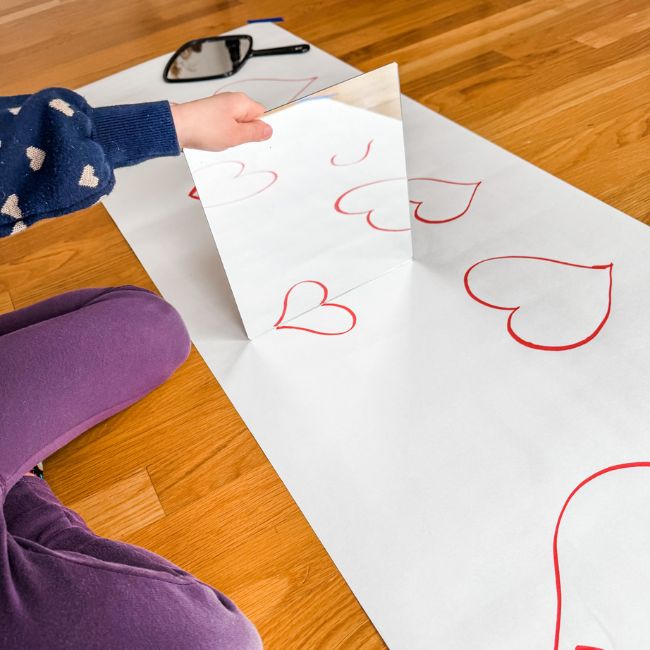
In this activity, children will explore the concept of symmetry using one of our favorite tools—mirrors! Mirrors not only encourage self-reflection in early childhood but also provide a hands-on way to investigate light, reflection, and mathematical concepts like spatial awareness and patterns. This open-ended activity offers many possibilities for extension, allowing children to connect their discoveries to shapes—especially hearts, which are perfect for Valentine’s Day but exciting to explore year-round!
Set up Time: 5 minutes
Directions
1. Draw several hearts of different sizes on easel paper and place mirrors on the exploration area for children to investigate.
2. Show children how holding a mirror along the center of a heart shape creates a reflection, illustrating symmetry and invite them to do the same.
3. Provide markers, crayons, or other materials for children to decorate the hearts. As they create, encourage them to use the mirror to observe how patterns or new shapes appear in the reflection.
4. Ask children to think of other symmetrical objects and draw them on the paper. Examples include faces, butterflies (using the letter “B”), or transforming a “3” into an “8” or a star.
Materials
- Mirrors (such as this $6 one)
- Easel paper
- Markers
Learning Through Play
Language: Vocabulary – This is a great opportunity to introduce the meaning of the word symmetry or symmetrical by saying “Look at what happens when you place the mirror along half of the heart—it looks the same on both sides! That means it’s symmetrical.”
Cognitive: Connections – Children will naturally explore and make observations about the difference in shapes and patterns of their creations when using the reflection of the mirror. You can encourage them to engage further by asking about what happens when they change the angle of the mirror, does the shape look different?
School Readiness: Spatial Learning – Mirrors are a fantastic, hands-on way to explore spatial concepts by observing how shapes, patterns and reflections take form.
See this activity in the Rayz Kidz app, along with the other fun STEM activities. Rayz Kidz is your trusted source for play-based activities featuring over 100 themes and 500+ hands-on activities and clear descriptions of the beautiful learning that is happening through play.